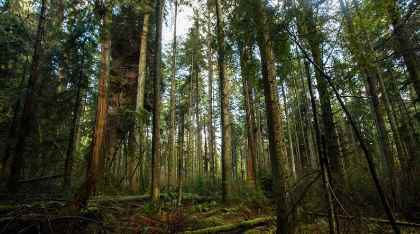Communicating science behind trees
Imagine a fast-moving information superhighway that facilitates communication and mutual aid among a huge and diversified group of people who may be geographically isolated from one another. This is all taking place while you travel through the woods. No, we're not discussing the internet; rather, fungi are the topic. Many biologists now refer to the communications services that fungi offer to plants and other organisms as the 'wood wide web' as a result of mounting evidence.
Every tree on the planet collaborates with underground fungi in a mutually beneficial relationship. These are fungi that investigate the soil and are helpful to plants. Mycelium, a mass of fine threads, is spread across the soil by the fungi. The plant's sugar or another chemical produced by photosynthesis is exchanged for the nutrients and water that the mycelium has collected, brought back to the plant, and transported by it.
This network is what links one tree root system to another, allowing for the flow of nutrients and water.
The term 'mycorrhiza' refers to the mutually beneficial interactions between plants and the fungus that inhabit their roots. Possibly far-removed plants are connected by mycorrhizae.
Earth's natural internet is the World Wide Web
Although the most well-known aspect of a fungus is its mushroom, mycelium makes up the majority of their bodies. The roots of many plants and species are connected by these threads, which operate as a form of underground internet known as the 'wood wide web.'
By connecting to the fungal network, they can share information and nutrients with their neighbors, or they can sabotage undesirable plants by dispersing harmful compounds across the network.
Additionally, fungal networks strengthen the defenses of their host plants. The act of connecting to mycelial networks alone increases disease resistance in plants.
In a forest, trees aren't actually distinct people. Using the fungal internet, large trees assist smaller, younger ones. Simard believes that many seedlings wouldn't survive without this assistance. She discovered that shaded seedlings, which are likely to lack food, absorbed carbon from nearby trees.




Leave Comment
1 Comments